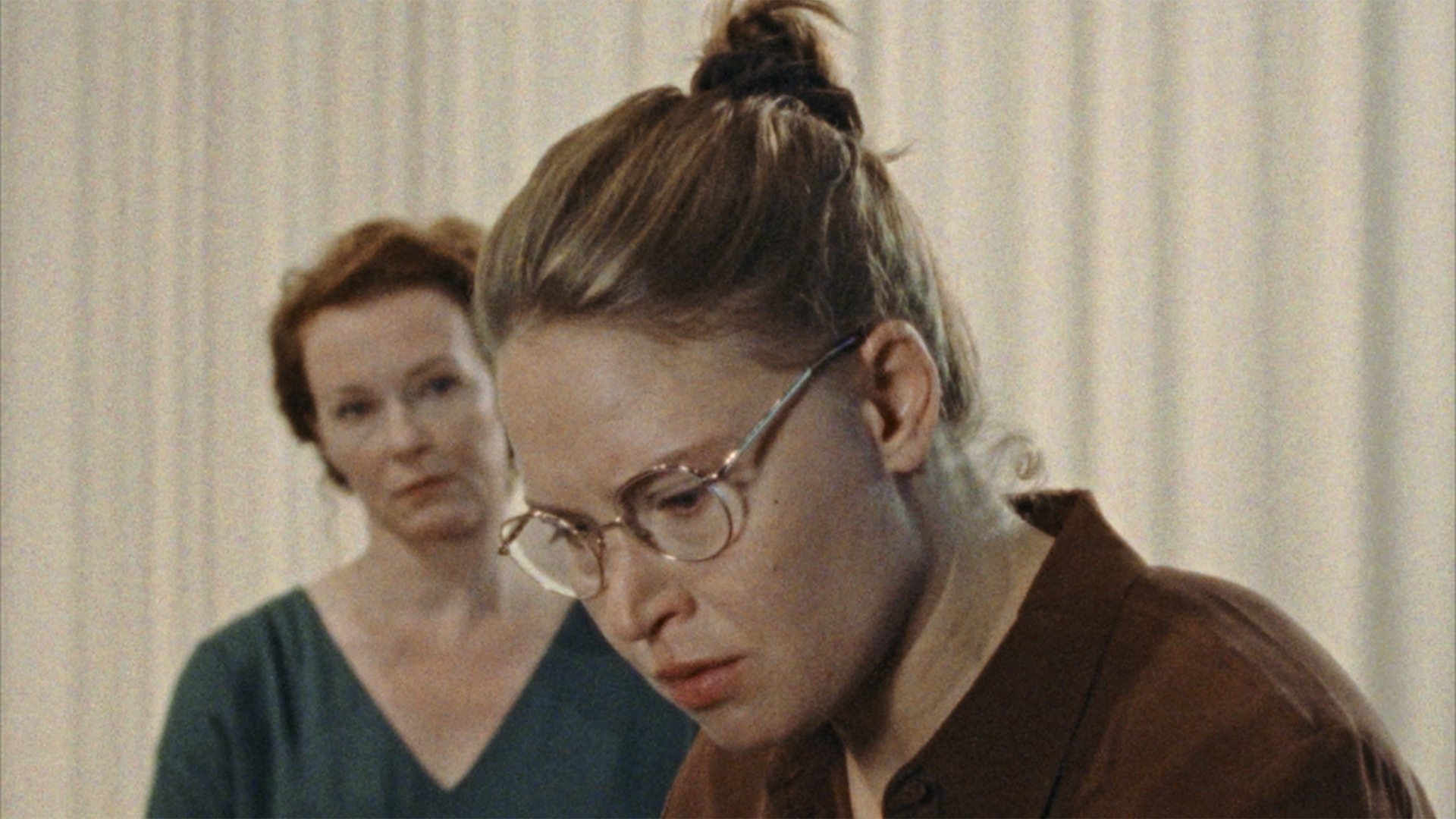Jenni Toikka
Prelude Op. 28, No. 2
Single-channel video installation, 8 min. 20 s.
2K scan of 16mm film
2021
Prelude Op. 28, No. 2 is a film named after a well-known composition by Chopin. During a single long shot, we see two people taking turns playing the piano and listening alternately. The song is the same both times – Prelude Op. 28, No. 2 – but when the performer changes, the interpretation of the song changes along with the perspective from which the song and its performance are viewed. The uninterrupted playing and single shot capture the event in one temporal moment, but as the camera moves and the two people change places, time is equally layered. The performer becomes the listener and the listener the performer.
The use of Chopin’s Prelude in the installation refers to both the Visual Overture and the tradition in classical music of reproducing and interpreting classics over and over again, as well as to the installation’s cinematic role model: Ingmar Bergman’s Autumn Sonata (1978). In one of the key scenes in the film, the mother and daughter take turns playing the composition in the film’s title. It is a piece that both are familiar with, so they are able to settle into the position of the other as they listen and watch the other play. A situation like this raises questions about the sense of reciprocity, simultaneity and synaesthesia. Could the roles become mixed from viewer and listener to watching and listening? When watching the other playing, can you feel your own hands and fingers on the keys? Does reciprocity also work in the way that the viewer of the video installation can listen through the ears of the actors in the film?

